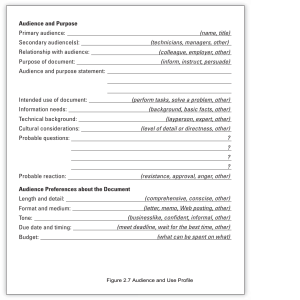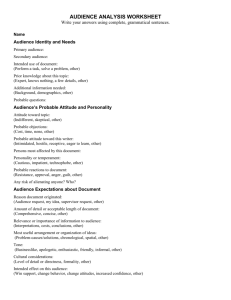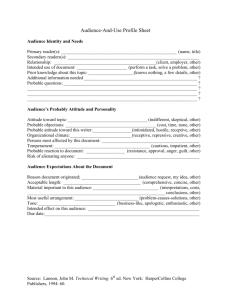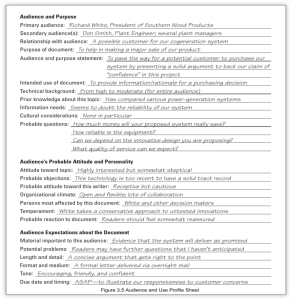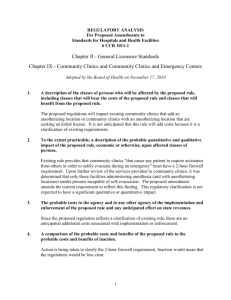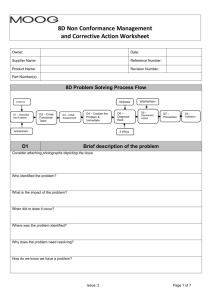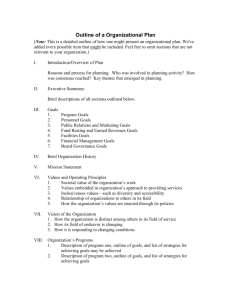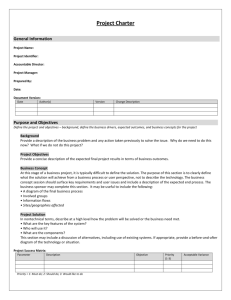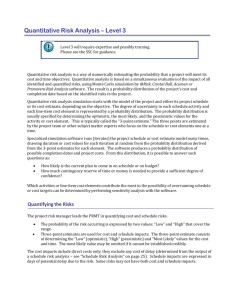RegulatoryAnalysisAttachment2011
advertisement
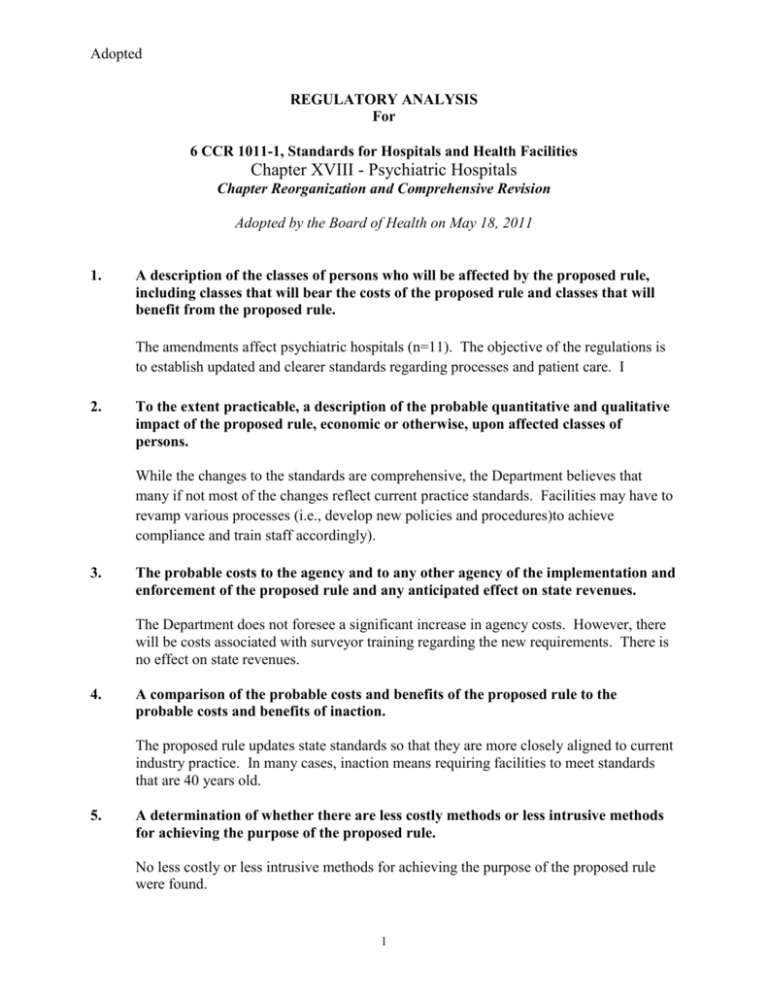
Adopted REGULATORY ANALYSIS For 6 CCR 1011-1, Standards for Hospitals and Health Facilities Chapter XVIII - Psychiatric Hospitals Chapter Reorganization and Comprehensive Revision Adopted by the Board of Health on May 18, 2011 1. A description of the classes of persons who will be affected by the proposed rule, including classes that will bear the costs of the proposed rule and classes that will benefit from the proposed rule. The amendments affect psychiatric hospitals (n=11). The objective of the regulations is to establish updated and clearer standards regarding processes and patient care. I 2. To the extent practicable, a description of the probable quantitative and qualitative impact of the proposed rule, economic or otherwise, upon affected classes of persons. While the changes to the standards are comprehensive, the Department believes that many if not most of the changes reflect current practice standards. Facilities may have to revamp various processes (i.e., develop new policies and procedures)to achieve compliance and train staff accordingly). 3. The probable costs to the agency and to any other agency of the implementation and enforcement of the proposed rule and any anticipated effect on state revenues. The Department does not foresee a significant increase in agency costs. However, there will be costs associated with surveyor training regarding the new requirements. There is no effect on state revenues. 4. A comparison of the probable costs and benefits of the proposed rule to the probable costs and benefits of inaction. The proposed rule updates state standards so that they are more closely aligned to current industry practice. In many cases, inaction means requiring facilities to meet standards that are 40 years old. 5. A determination of whether there are less costly methods or less intrusive methods for achieving the purpose of the proposed rule. No less costly or less intrusive methods for achieving the purpose of the proposed rule were found. 1 Adopted 6. A description of any alternative methods for achieving the purpose of the proposed rule that were seriously considered by the agency and the reasons why they were rejected in favor of the proposed rule. No alternative methods of achieving the purpose of the proposed rule were found. 7. To the extent practicable, a quantification of the data used in the analysis; the analysis must take into account both short-term and long-term consequences. The proposed rule is more prescriptive than existing standards. However, this is not expected to impact service delivery because facilities are already required to meet many of the "new" license requirements as part of Medicare/Medicaid certification or Joint Commission of Healthcare Organizations (JCAHO) accreditation. 2
